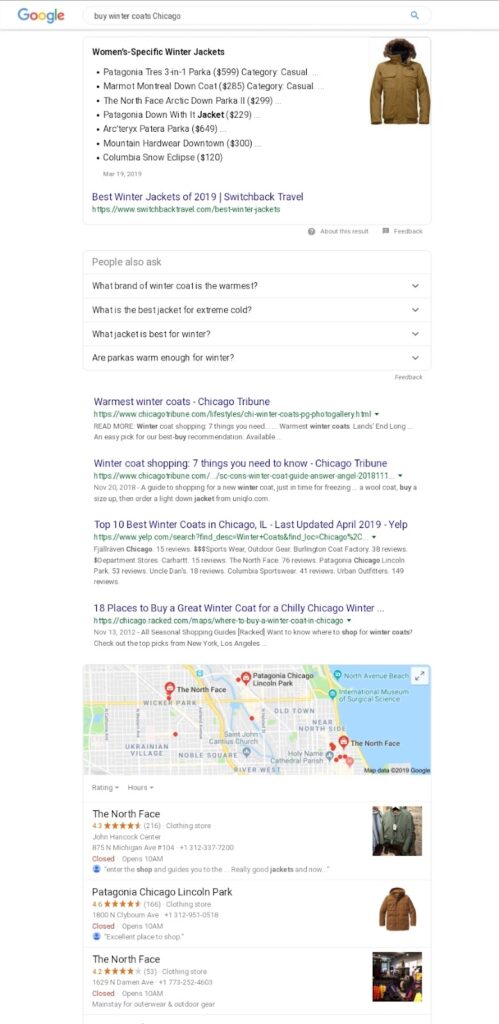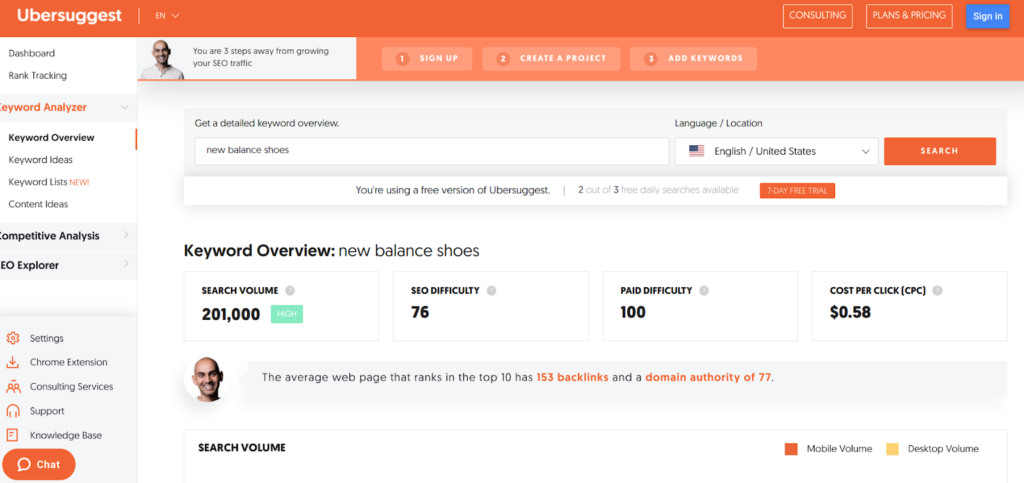7 eCommerce Lead Generation Tactics for 2022

Today, more buyers shop for products online.
According to Statista, over two billion people bought products or services online in 2020, and e-retail sales grew past $4.2 trillion worldwide.
Luckily, this is an opportunity to increase your eCommerce sales and profits.
How can you turn these shoppers into your customers?
By first converting your website visitors to qualified leads.
If you execute this step effectively, it becomes easier to nurture your leads and convert them to customers. But, first things first, how can you capture more leads for your eCommerce store this year?
In this post, I’ll show you 7 eCommerce lead generation tactics that work well in 2022.
Why Does Lead Generation Matter in eCommerce?
Before we go into the tactics, why does lead generation even matter for your eCommerce store? What are the potential benefits you stand to gain?
Here are 5 of them:
You have access to buyer’s information
When you acquire leads, you’ve obtained details such as:
- Name
- Email address
- Phone number
- Address
- Gender
- Product preferences
With the stiff competition among eCommerce stores today, having information about your potential customer can provide an edge to convert an individual into a customer.
These pieces of information will help you create relevant offers that can convince your prospects.
Again, buyer information can help you determine the right time to send offers to them.
Acquire more feedback
When you capture a lead, one of your aims is to understand that lead.
And to achieve this, you need to acquire as much information as possible from them.
Through interactions with your leads, you’ll obtain information about their favorite products, their pain points, budget, and more. This feedback gives you the ability to improve your service and capture even more leads in future marketing campaigns.
It becomes easier to track marketing results
In some cases, shoppers browse through your store and buy products without leaving their information. This can make it difficult to know how effective your marketing campaigns are.
By generating leads, you’ll have an objective number of your audience size.
While running marketing campaigns, you can easily track results based on the number of leads you have and how they progress through the sales funnel.
Increases your chances of boosting sales
Since you have leads in your marketing system, you can create personalized marketing sequences to convert those leads into customers.
Through your interactions, you’ll understand a lead’s preferred marketing channel and connect with them on those channels.
Furthermore, the knowledge you have about leads over time helps you recommend the right products to each prospect.
As a result, you’re likely to improve sales compared to sending your whole product catalog to a lead.
Increases website traffic
During your interactions with prospects, you’ll often share website links for them to check some pages. Whether you’re trying to educate your audience or promote an offer, directing them to your website pages will provide all the information they need at different stages of the sales funnel.
Due to these campaigns, you can get more valuable traffic to your website.
Effective eCommerce lead generation tactics
Now that you know why lead generation is a must for your eCommerce store, you probably want to generate more leads.
But it’s not an easy task. For instance, stats have it that 61% of marketers rank lead generation as their number one challenge.
Nevertheless, you have to engage in this activity and do it successfully. So, what are lead generation tactics you should consider using in your marketing campaigns?
1. Use a lead magnet
Think about it, your inbox is crowded. Likewise, your website visitors’ inboxes are crowded.
This makes people reluctant before giving out their personal information. Of course, you intend to provide value to your subscribers after they sign up.
To most visitors, however, that’s insufficient. You have to provide value right now.
That’s why using a lead magnet can increase the number of eCommerce leads you generate.
For eCommerce stores, some common lead magnet ideas include:
- Discounts
- Free shipping
- Giveaways
- Shopping guides
Here’s a popup from Old Navy promising a 20% discount for its visitors:

Beyond that, the clothing and accessories company also promised information about new arrivals and exclusive sales. These are lead magnets that can convince a visitor to enter their email address.
While using a lead magnet, you have to observe some best practices. First, the lead magnet has to be relevant to your audience.
For instance, a discount offer is more attractive to a shopper than telling them to subscribe to your latest blog posts.
Therefore, a discount will be more effective as a lead magnet than promising to send newsletters.
Another point to keep in mind is that the lead magnet should be helpful within a short time. If potential leads don’t need your lead magnet until 3 weeks, then it will have a weaker pull.
2. Use exit-intent popups
Since shoppers now have so many choices, they might compare offers on 4 or 5 websites before deciding where to buy.
Apart from that, shoppers may have other reasons to abandon your website.
And sometimes, when they leave, they never come back.
Whatever reason they have to leave your site, you can use a popup maker to create exit-intent popups to bring them back.
And if they’re on your checkout page, you can turn the leaving shopper into a customer.
Even if they end up leaving your website, exit-intent popups allow you to acquire their details for future contact.
Here’s an exit-intent popup example from Minimum, an eCommerce store:

Through this exit-intent popup, Minimum captured 9,362 leads they would have probably lost.
3. Optimize your pages for valuable keywords
A lot of times, shoppers begin their buying process through a Google search.
If your website content shows up among the results, you have a chance of attracting visitors and converting them to leads. Otherwise, you’re losing potential leads.
Now, the first step to content creation is by optimizing your pages for keywords you want to rank for.
What keywords are your potential customers using on search engines?
You can discover keywords and group them based on different search intents.
These include:
- Navigational keywords: these are keywords used to find specific brand pages e.g. Shopify login page.
- Informational keywords: these are keywords used to find information about a topic, product, or service, e.g. how to identify original calf leather.
- Commercial keywords: these are keywords from searchers who will likely buy in the future but have not settled on a product e.g. best TV set.
- Transactional keywords: these are keywords searchers use when they’ve decided on a product to buy e.g. buy brogue shoes in Boston.

These keyword groups allow you to target potential leads at different stages of the sales funnel.
That said, you can’t perform adequate keyword research without the right tool.
Some popular keyword research tools today are SEMrush, Ahrefs, Ubersuggest, keywordtool.io, or any of these alternatives to SimilarWeb.
Once you discover the keywords potential customers use, you can optimize your page for those keywords.

Optimization includes tasks such as:
- Adding target keywords to parts of your pages such as URL, title, subheadings, and more
- Ensuring your page content meets the search intent of the searcher
- Increasing your website speed
- Making your website mobile-friendly
- Having a simple website structure
Apart from optimizing your pages, you should also perform off-page SEO tasks such as building backlinks to your pages and guest blogging.
4. Optimize your landing pages for optimum conversions
Landing pages are one of the most potent tools for generating leads. In most cases, you can create landing pages specifically for marketing campaigns.
Whether you’ve created a social media or search ad, you’ll direct clicks from them to your landing pages.
On this page, you have to present an offer that is convincing enough for visitors to submit their details.
Furthermore, you can use psychological concepts such as social proof, fear of missing out (FOMO), scarcity, and more.
Some elements you need to optimize on your landing page include your offer, page copy, background image, CTA text, CTA button color, and more.
Beyond that, your landing page should be congruent with your ad.
That is, your ad design and eCommerce offer should be similar to that on your landing page for continuity.
Another vital part of optimizing your landing pages is performing A/B tests.
With A/B tests, you can compare two variations or more of your landing page to see the one with the highest conversion.
However, to run effective A/B tests, you should only test a single element of your page. This way, you’ll easily identify the change responsible for your increase in conversions.
Some A/B testing tools you can use to track user behavior and perform A/B tests on your landing pages are VWO, Optimizely, and Crazy Egg.
UK Tool Centre, an eCommerce store, removed filters from its woodcare product page.

Through this optimization, the store achieved a 27% increase in engagement on its product page.
5. Create search ads with sitelink extension
For your eCommerce store, there are many product categories your customers want to browse.
When you create PPC ads, the sitelink extension allows you to add page links below your ad.
For instance, if you’re running PPC ads for a keyword such as “men’s shoes,” you can link to a landing page that contains a selection of men’s shoes.
But below the result, you can add sitelinks to different types of shoes.
In this situation, the searcher may see a category that interests them. Consequently, you increase the chances of a searcher clicking through to your website.
Here’s an example from Kate Spade:

You can see that even the ad sitelinks are relevant to the search query.
According to Google, adding sitelinks to your ads can increase the average CTR for that ad by 10-20%. And for queries where the searcher is searching for a branded term, the CTR can increase by 20-50%.
Once you get searchers using valuable keywords to visit your landing page, it becomes easier to convert them to qualified leads.
6. Host social media giveaways
Most people love gifts. Especially, if the gift is a product they admire.
That’s why giveaways and contests are popular with most people.
Think about it, if you have social media followers, these are people who are already interested in your brand. Therefore, a giveaway will only improve the interaction and trust they have in you.
Apart from improving interactions, there are other benefits of running a giveaway depending on your campaign goals.
For example, some possible benefits include:
- Increasing social media followers
- Improving brand awareness
- Increasing website traffic
- Generating leads
- Increasing sales
Talking about generating leads, how do you achieve that during your social media giveaways? One effective way is to use your entry criteria.
Some of your entry criteria may include participants entering their email addresses or following you on social media. Even though it’s challenging to account for social media leads, they can become customers in the future through your social media campaigns.
Here’s an example of a giveaway on Instagram by Goodnight Macaroon, an eCommerce store for casual women’s clothing:

By using a giveaway tool, you can create a giveaway landing page on your website. Consequently, visitors can enter giveaways and submit their contact details.
7. Run ad remarketing campaigns
No matter how great your website or effective your campaign is, some visitors will leave without converting.
Are these people lost forever?
With ad remarketing, you have the opportunity to bring back visitors who have left your website. One advantage ad remarketing has over traditional ads is that recipients already know your brand. After all, this is not an ad from an unknown brand promoting products they have no interest in.
Therefore, remarketing ads usually get more clicks than traditional ads.
If you want to run a remarketing ad right now, some popular platforms you can explore are Google, Facebook, and Instagram.
To create effective remarketing ads, you can create ads according to the pages an individual visits. This way, the ads will be even more relevant to the recipient.
For instance, a WordStream study revealed that remarketing audiences get 2 – 3X better click-through and conversion rates than new visitors.

However, the landing page for your remarketing ad shouldn’t be the original page they bounced from. If the page failed to convert them the first time, what’s the chance it will convert them the second time?
So, you should modify the original page to increase the chances of conversions. When some of them come back to your website, they can submit their contact details or, better still, buy a product.
In a remarketing ad case study, Sierra Trading Post sent ads to visitors who viewed their products. This led to a 5X increase in conversions for the eCommerce store.

While this campaign has increased sales, you can run similar campaigns for lead generation.
Conclusion
Generating consistent leads is a must for your eCommerce store if you want your business to survive and thrive. In this post, I’ve provided 7 tactics that still work effectively in 2022.
Of course, there are probably tens of tactics you can exploit. However, you can start with these tactics to capture more leads and generate sales.
Which of these tactics is your favorite? Is there a tactic that has worked wonders for you but is absent here? Let’s hear in the comments!